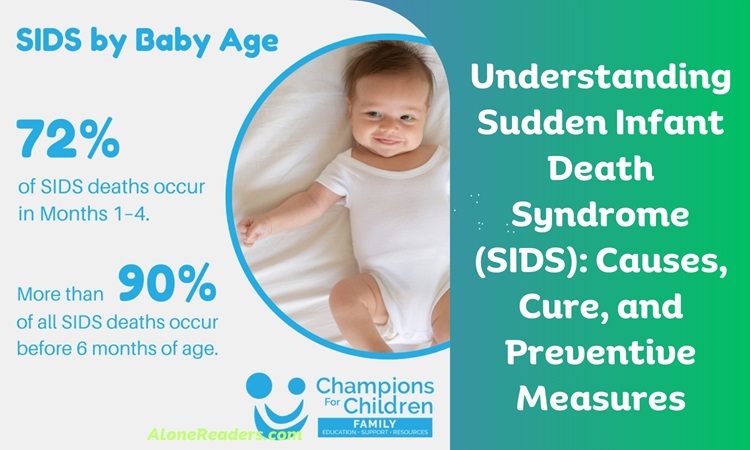
Sudden Infant Death Syndrome (SIDS), often referred to as "crib death," remains a perplexing and tragic occurrence that strikes families unexpectedly. It is defined as the sudden and unexplained death of an apparently healthy infant, usually during sleep, within the first year of life. SIDS is a diagnosis of exclusion, given when all other potential causes of death have been ruled out. Despite extensive research, the exact causes of SIDS remain largely unknown, making it a topic of ongoing scientific inquiry and parental concern.
The mystery surrounding SIDS lies in its silent and sudden nature. Most cases occur during sleep, in seemingly healthy infants, without any signs of struggle or discomfort. This has led researchers to believe that SIDS might be associated with abnormalities in the part of an infant's brain that controls breathing and arousal from sleep. Infants, particularly in the early months, have a limited ability to wake or respond to environmental stressors, including low oxygen levels or high carbon dioxide levels. If the brain fails to send the necessary signals to awaken the infant or to reinitiate breathing, it could result in SIDS.
Additionally, several risk factors have been identified in relation to SIDS. These include premature birth, low birth weight, smoking during pregnancy, overheating during sleep, and sleeping on the stomach or side. The prone sleeping position, in particular, has been strongly linked with an increased risk of SIDS. This discovery led to numerous public health campaigns advising parents to place infants on their backs to sleep, which has significantly reduced the incidence of SIDS in many countries.
Environmental factors also play a crucial role. The use of soft bedding, pillows, and loose blankets in cribs has been associated with an increased risk. Furthermore, co-sleeping, particularly on soft surfaces like couches or armchairs, has been found to elevate the risk of SIDS, as well as accidental suffocation.
Preventive measures, therefore, focus on creating a safe sleeping environment and avoiding risk factors. The "Back to Sleep" campaign, advocating for placing babies on their backs to sleep, has been a cornerstone of SIDS prevention. Ensuring a firm mattress with a fitted sheet, keeping the crib free of toys, pillows, and loose bedding, maintaining a comfortable room temperature to avoid overheating, and using a pacifier during naptime and bedtime are also recommended. These measures, combined with avoiding exposure to smoke, alcohol, and drugs during pregnancy and after birth, can significantly decrease the risk of SIDS.
Breastfeeding has also been shown to offer some protective effects against SIDS, although the reasons are not fully understood. It is believed that breastfeeding enhances the immune system and may help regulate an infant's breathing and arousal patterns.
While there is currently no cure for SIDS, ongoing research continues to explore the biological and environmental factors that contribute to it. Genetic studies are examining whether some babies have a predisposition to SIDS, and extensive research is being conducted on brainstem abnormalities and neurotransmitter irregularities in infants who have succumbed to SIDS.
Education remains a critical tool in the fight against SIDS. Pediatricians and health care providers routinely educate parents and caregivers about safe sleep practices. Public health campaigns continue to raise awareness, emphasizing the importance of a safe sleeping environment.
In addition to these measures, the emotional impact of SIDS on families cannot be overstated. Parents who have lost a child to SIDS often struggle with guilt, grief, and unanswered questions. Support groups and counseling services can provide much-needed emotional support and assistance in coping with such a devastating loss.
In conclusion, Sudden Infant Death Syndrome represents a complex interplay of biological, environmental, and potentially genetic factors. While the exact causes remain elusive, adherence to safe sleep practices has significantly reduced the incidence of SIDS. Continuous research, public education, and parental awareness are key to further reducing the risk and eventually uncovering more definitive answers regarding this heartbreaking syndrome. Until then, understanding and implementing preventative measures remain the best defense against SIDS.